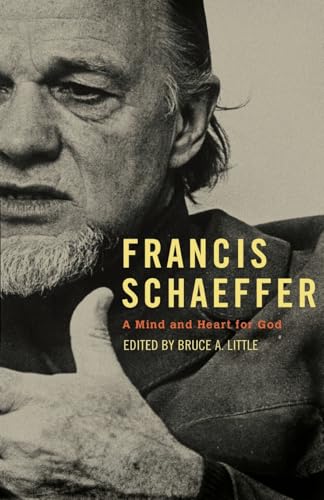A New History of Early Christianity
Written by Charles Freeman Reviewed By Keith GoadCharles Freeman’s A New History of Early Christianity describes the various movements and controversies surrounding Christ and the early church. Freeman divides the book into three parts. The first part, which is also the most controversial, offers a picture of Christ, his first disciples, and the organization of the canon. Freeman argues that the historical Jesus is different from the Jesus presented in the Gospels. The most significant contribution in the first part is Freeman’s furthering the theory that the body of Christ was stolen. He reasons that Caiaphas had the body stolen in order to discourage the disciples so they would go back to Galilee, a region outside of his jurisdiction.
The second part demonstrates the difficult decisions the first Christians had to make, stressing the church’s dilemma of whether it would align itself with Greek philosophy or the Hebrew Scriptures. His chapters discussing the significance of Origen and the new findings at Nag Hammadi are insightful. Another contribution in this section is Freeman’s description of the many differences among various Christians and their attitudes toward synthesizing the Christian faith and Greek philosophy (Plato, Aristotle, Stoicism).
The third part focuses on the new challenges that faced the church and the state after Constantine. This section describes the ecumenical councils and the rise of the bishop’s significance that gave a permanent definition to Orthodox theology. Freeman correctly determines that the ecumenical councils did not end the debates over the nature of Jesus and that the debate was not as simple as is often presented. The two latter sections introduce a number of key leaders in the early church and the manner in which they contributed to the growing variety of teaching found in the early church. Beyond the contents of the chapters, the book includes glossaries of significance people and terms from the early church, a comprehensive timeline, and a list for further reading.
Freeman’s main contention is that it is impossible to find a “secure foundation” upon which one can define and defend a single Christianity: “there is no clear line between heresy and orthodoxy” (p. 156). The first part begins by challenging the idea of a single orthodoxy by arguing that it is impossible to come to a consensus on the true identity of Jesus. The four Gospels, he argues, were chosen out of many available and have no more authority than the rest. The second part argues that the first churches that organized were too diverse in their beliefs, influences, and selections of Scripture to find a single form of Christianity. Some of the groups he includes in his survey of Christian churches have loose connections to Christianity; one of the most extreme is the worshippers described in the Apocryphon, whose connection is simply their practice of baptism. The third part argues that the imperial powers influenced the councils to define orthodoxy in order to secure stability in the Empire. The groups that were eventually considered heretical had as much claim to being followers of Christ as the orthodox and, according to Freeman, had a closer connection to the Jesus of the gospels.
Freeman begins the work by labeling it historical in contrast to theological (pp. xiv–xv). This distinction proves difficult for him to maintain when writing on an issue such as the nature of the church and the worship of Christ. He makes numerous theological judgments on the resurrection, the divinity of the Son, the nature of God, and Scripture. First, he denies that Scripture presents Christ as divine and that Jesus saw himself as distinct from the Father. Second, he criticizes the early Trinitarian doctrine as inconsistent and confusing. Third, he argues that the Jesus presented in the early orthodox creeds was established in order to solidify the Roman state. The true Jesus was a threat to imperial stability because he fought against the state, which then killed him. This is a theological judgment that logically determines that the established orthodox position is wrong for exalting Christ. It logically leads one to conclude that the orthodox position is really heretical.
Freeman’s work provides clear arguments concerning the identity of Christ and the nature of the church. The first section will be the least helpful for evangelicals because of the strong dichotomy he creates between the historical Jesus and the Gospels. Yet this section is still helpful in terms of historical background in the Gospels. His summaries of early Christian leaders and the variety of approaches of relating Christianity to Greek philosophy and the state are the book’s most helpful contribution. These figures and their struggles with contextualization can provide helpful examples for how the church today can continue to think about relating the gospel to the culture.
Keith Goad
The Southern Baptist Theological Seminary
Louisville, Kentucky, USA
Other Articles in this Issue
I didn’t come from an Evangelical home, and though he never told me outright, I’m sure my father never wanted me to become a pastor...
Does Baptism Replace Circumcision? An Examination of the Relationship between Circumcision and Baptism in Colossians 2:11–12
by Martin SalterReformed paedobaptists frequently cite Col 2:11–12 as evidence that baptism replaces circumcision as the covenant sign signifying the same realities...
New Commentaries on Colossians: Survey of Approaches, Analysis of Trends, and the State of Research
by Nijay GuptaNew Testament scholarship in its present state is experiencing a time of abundance, especially with respect to biblical commentaries of every shape, length, level of depth, theological persuasion, intended audience, and hermeneutical angle...
It might seem odd to write an editorial for a theological journal on the topic of not doing theology and how important that can be; and, indeed, perhaps it is contrarian even by my own exacting standards...
Most readers of Themelios will be aware that the word “perfectionism” is commonly attached in theological circles to one subset of the Wesleyan tradition...







